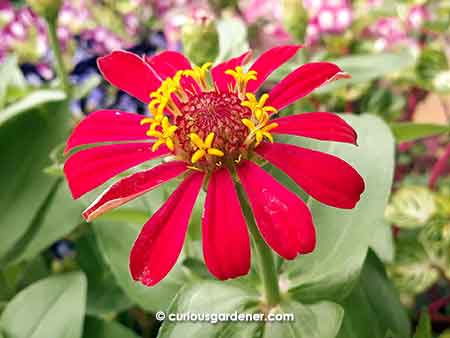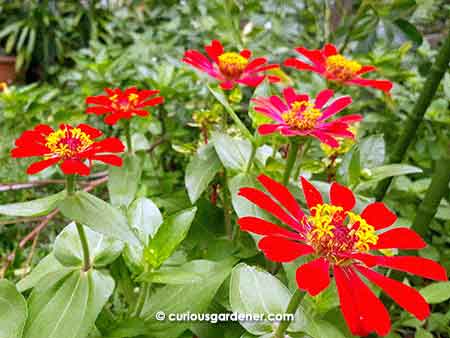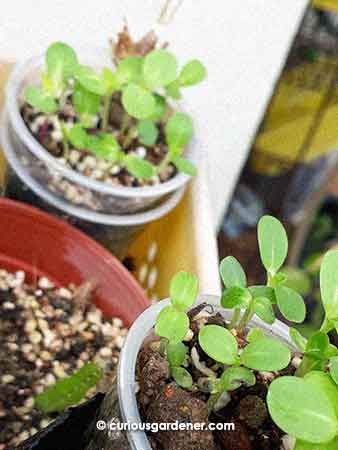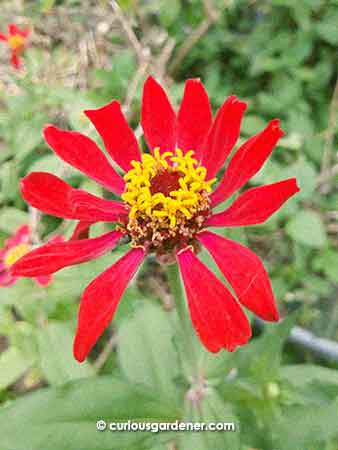Some months ago, I went on a little flower-buying binge. One of the plants that had caught my eye was the zinnia. If you recall, I once grew that flowering plant years ago, and it had fascinated me because the composite flower was so visually interesting. Like nature, it “went out of season” with me after a while, so when I saw it at the nursery, I decided to buy a couple of plants – one red and one yellow, because the colours were so vibrant.
When I got home and spent more time with the plants, it wasn’t long before I fell head over heels in love with the red version of the plant. The way the red contrasted with the yellow centre was just too gorgeous. The yellow was pretty, but the entire flower was yellow – and it seemed to attract more pests than the red one (think of yellow sticky insect traps…). I was determined to keep growing red zinnias, so when the first flower had passed its prime, I left it to form seeds.
I harvested the seeds when the flower head started drying up, and was delighted to get some fully formed, hard brown seeds. I planted them, and then because I hate to waste anything, I threw in the less matured seeds to mulch the ones I had sown. Guess what? A lot of them also germinated! I had a little forest of seedlings, and I planted them out.
That’s when things got “interesting”. Some of the plants were a bit weedy – the stems were long and curly, like they were starved for light (which they weren’t) – and they just didn’t grow into strong plants. Those that did grow looked nice and strong like the parent plant. Then they formed buds, and things again got interesting…
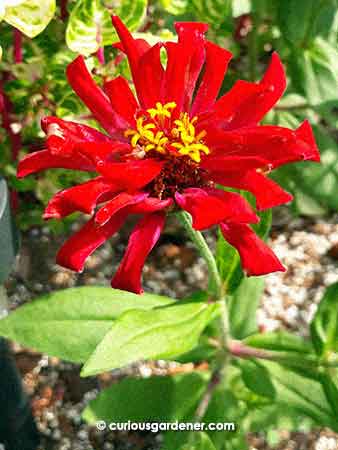
The flower on this plant didn’t form properly – the cluster of yellow flowers is smaller and not arranged in a ring, like the parent’s
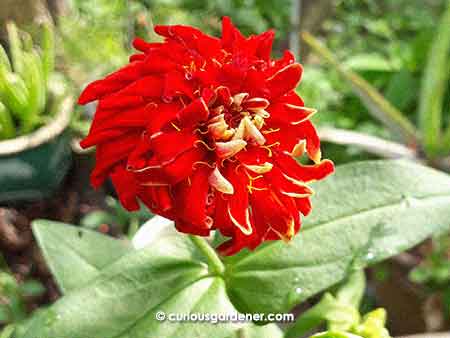
I call this the pom-pom zinnia flower – it has way too many outer petals, and no disc flowers in the centre!
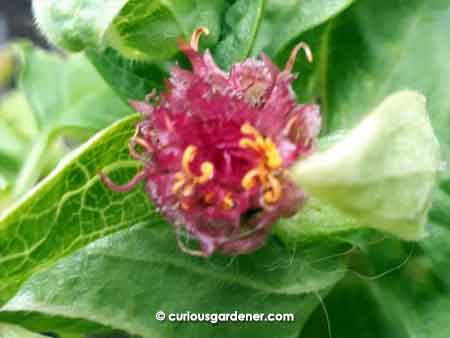
There’s only one thing to call this – a mutant zinnia flower! It had no outer petals, and didn’t form proper disc flowers in the centre. How bizarre!
Lessons learned from this experience – use the best seeds and be firm in discarding the rest. Although the second generation of seeds should be acclimatised to our garden, the quality of plant cannot be guaranteed. It was an interesting experiment, though!
© 2019 curiousgardener.com All rights reserved.

